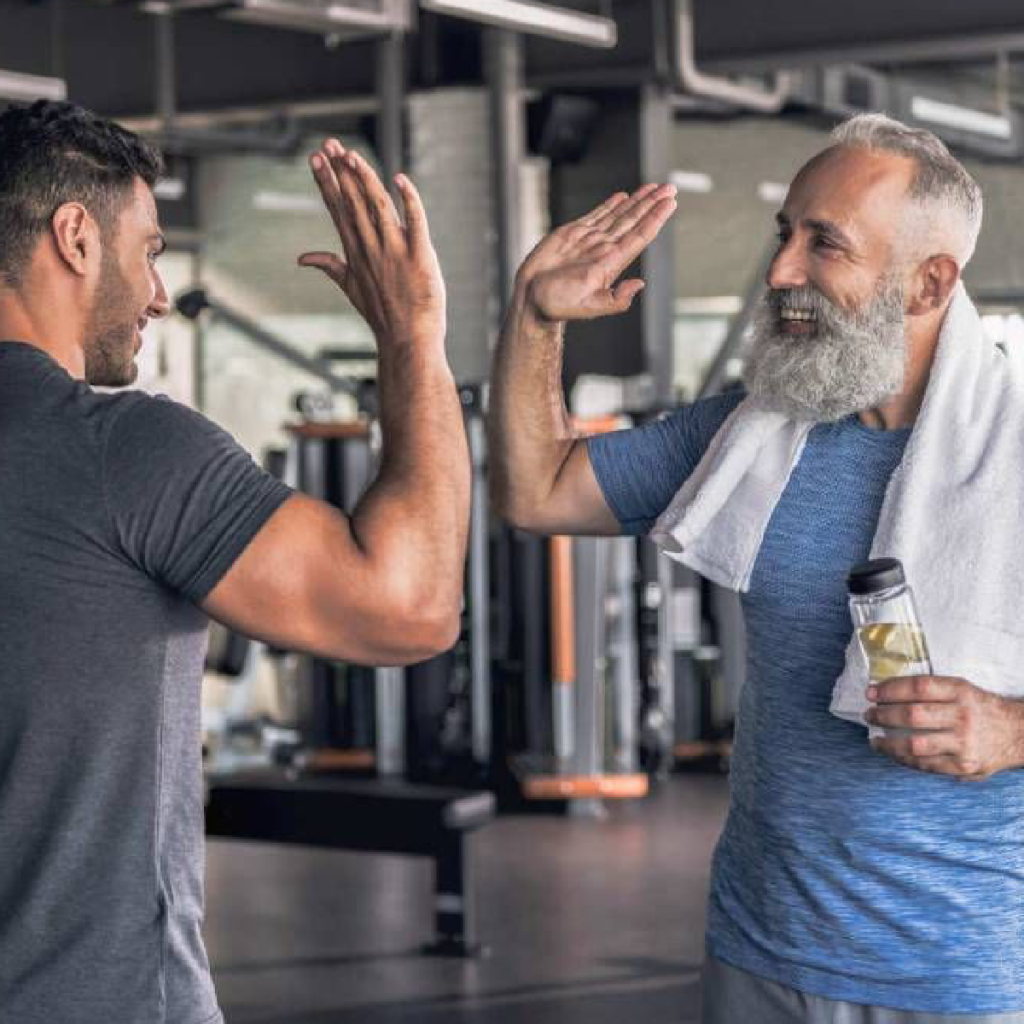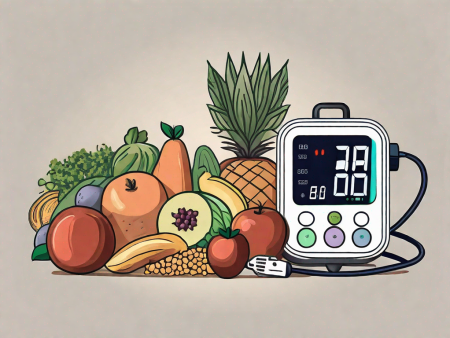Discover effective exercises that can help counteract the effects of aging.
Exercises to Help Counteract the Effects of Aging
Aging is a natural process that affects every aspect of our lives, including our physical health. As we get older, it’s essential to take proactive steps to counteract the effects of aging and maintain our overall well-being. One of the most effective ways to do this is through regular exercise. In this article, we will explore the impact of aging on physical health, the importance of regular exercise, different types of exercises for aging adults, creating a safe and effective exercise routine, and precautions and considerations for exercise in older age.

Understanding the Impact of Aging on Physical Health
Aging can bring about various changes in our bodies that can significantly impact our physical health. As we age, our metabolism slows down, making it easier to gain weight and more challenging to lose it. This is due to a decrease in muscle mass and an increase in body fat percentage. As a result, older adults may experience weight gain, especially around the waistline, which can increase the risk of developing chronic conditions such as diabetes, heart disease, and certain types of cancer.
In addition to changes in metabolism, aging also affects our muscles and bones. With age, muscle mass naturally decreases, leading to a loss of strength and endurance. This can make daily activities, such as carrying groceries or climbing stairs, more difficult. Weaker muscles also increase the risk of falls, which can result in fractures, especially in older adults with osteoporosis, a condition characterized by low bone density.
Furthermore, aging can bring about common health concerns such as arthritis, heart disease, and osteoporosis. Arthritis, a condition that causes joint inflammation and pain, becomes more prevalent with age, affecting millions of older adults worldwide. Heart disease, including conditions such as high blood pressure, coronary artery disease, and heart failure, also becomes more common as we age. Osteoporosis, a condition characterized by weakened bones, affects both men and women but is more prevalent in postmenopausal women.
However, the good news is that regular exercise can help mitigate these effects and improve overall physical health in aging adults. Engaging in activities that promote cardiovascular fitness, such as walking, swimming, or cycling, can help maintain a healthy weight, strengthen the heart, and improve circulation. Strength training exercises, such as lifting weights or using resistance bands, can help preserve muscle mass, increase bone density, and improve balance, reducing the risk of falls and fractures.
In addition to exercise, maintaining a balanced and nutritious diet is crucial for healthy aging. Consuming a variety of fruits, vegetables, whole grains, lean proteins, and healthy fats can provide essential nutrients that support overall health and well-being. Adequate hydration is also important, as older adults may have a reduced sense of thirst, increasing the risk of dehydration.
Furthermore, regular check-ups with healthcare professionals are essential for monitoring and managing age-related health concerns. Routine screenings for conditions such as high blood pressure, cholesterol levels, and bone density can help detect and address potential issues early on. Additionally, healthcare providers can offer guidance on medication management, vaccinations, and lifestyle modifications to optimize physical health in older adults.
In conclusion, aging brings about various changes in our bodies that can impact physical health. However, through regular exercise, a balanced diet, and proactive healthcare, older adults can maintain and improve their physical well-being. It is never too late to prioritize and invest in one’s health, ensuring a fulfilling and active life as we age.
The Importance of Regular Exercise
Regular exercise is crucial for individuals of all ages, but it becomes even more vital as we grow older. Engaging in physical activity has numerous benefits for seniors, both physically and mentally. Let’s explore a few of these benefits:
Benefits of Regular Exercise for Seniors
Exercise improves cardiovascular health, lowers blood pressure, and reduces the risk of heart disease. It also helps to maintain a healthy weight and manage chronic conditions such as diabetes. Regular physical activity can strengthen muscles and bones, promoting better balance and reducing the risk of falls.
Moreover, exercise plays a significant role in maintaining a healthy immune system. As we age, our immune system weakens, making us more susceptible to infections and diseases. However, engaging in regular exercise can boost our immune system, helping us fight off illnesses and stay healthier overall.
Exercise is not just beneficial for physical health; it also has a positive impact on mental well-being. Engaging in regular physical activity can improve mood, reduce symptoms of anxiety and depression, and enhance cognitive function. When we exercise, our brain releases endorphins, which are natural mood-boosting chemicals. These endorphins help alleviate stress and promote a sense of well-being.
Overcoming Exercise Myths in Aging
Despite the numerous benefits of exercise, there are still many myths and misconceptions surrounding physical activity in older adults. One common myth is that it’s too late to start exercising in old age. However, research has shown that it’s never too late to make exercise a part of your life and reap the benefits.
Another myth is that older adults should avoid strenuous exercise. While it’s important to listen to your body and exercise at a level that is appropriate for you, engaging in moderate to high-intensity exercise can actually have significant health benefits, including improved cardiovascular health and increased muscle strength. When done correctly and under proper supervision, even older adults can safely participate in activities like weightlifting, aerobics, and interval training.
Furthermore, exercise can also have a positive impact on social well-being. Joining group exercise classes or participating in outdoor activities can provide opportunities for social interaction and help combat feelings of loneliness and isolation that are common among seniors.
In conclusion, regular exercise is essential for seniors to maintain their physical and mental well-being. It offers a wide range of benefits, including improved cardiovascular health, better immune function, enhanced mood, and increased social engagement. It’s never too late to start exercising and debunk the myths surrounding physical activity in older adults. So, let’s prioritize exercise and enjoy a healthier and happier life!
Different Types of Exercises for Aging Adults
When it comes to exercise for seniors, it’s essential to choose activities that address various aspects of physical health. Incorporating a combination of cardiovascular, strength-building, flexibility, and balance exercises into your routine can help you maintain overall fitness and independence. Let’s take a look at each of these types of exercises:
Cardiovascular Exercises for Aging
Cardiovascular or aerobic exercises are activities that increase your heart rate and breathing rate, promoting better cardiovascular health. Engaging in regular cardiovascular exercise not only strengthens your heart and lungs but also helps to improve circulation throughout your body. This can have numerous benefits for aging adults, such as reducing the risk of heart disease, managing weight, and improving mood.
Examples of cardiovascular exercises for seniors include brisk walking, which can be done outdoors or on a treadmill, swimming, which is gentle on the joints and provides a full-body workout, cycling, which can be done on a stationary bike or outdoors, dancing, which not only gets your heart pumping but also adds a fun element to your exercise routine, and water aerobics, which provides resistance and support while reducing the impact on your joints.
Strength-Building Exercises for Aging
Strength-building exercises help to maintain and increase muscle strength, which is crucial for maintaining independence and preventing falls. As we age, muscle mass naturally declines, but engaging in regular strength-building exercises can help slow down this process and preserve muscle strength. Strong muscles also support healthy joints and improve overall balance and stability.
Some examples of strength-building exercises for seniors include lifting weights, which can be done with dumbbells or resistance machines at a gym or even with household items like water bottles or cans, using resistance bands, which provide a convenient and portable way to add resistance to your exercises, and performing bodyweight exercises like squats, lunges, and push-ups, which use your own body weight to build strength.
Flexibility and Balance Exercises for Aging
Flexibility and balance exercises are essential for maintaining and improving joint mobility and stability, reducing the risk of falls. As we age, our muscles and joints become stiffer, making it important to incorporate exercises that promote flexibility. Balance exercises, on the other hand, help to improve stability and prevent falls, which can be a significant concern for aging adults.
Activities like yoga, which combines stretching, balance, and mindfulness, tai chi, which focuses on slow, controlled movements and shifting body weight, and Pilates, which emphasizes core strength and flexibility, are excellent choices for seniors. These exercises not only help to improve flexibility and balance but also promote relaxation and mental well-being.
In conclusion, incorporating a variety of cardiovascular, strength-building, flexibility, and balance exercises into your routine can provide numerous benefits for aging adults. These exercises not only help to maintain overall fitness and independence but also contribute to better cardiovascular health, muscle strength, joint mobility, and stability. Remember to consult with your healthcare provider before starting any new exercise program, especially if you have any underlying health conditions.
Creating a Safe and Effective Exercise Routine
When starting an exercise routine, it’s essential to prioritize safety and effectiveness. Here are a few tips to help you create a workout plan that works for you:
Tips for Starting an Exercise Routine
- Consult your doctor: Before starting any new exercise program, it’s crucial to consult your healthcare provider, especially if you have any existing health conditions or concerns.
- Start slow and gradually increase intensity: It’s important to start with gentle exercises and gradually increase the intensity as your fitness level improves. This approach helps prevent injuries and allows your body to adapt to the new demands.
- Find activities you enjoy: Exercise doesn’t have to be boring! Choose activities that you enjoy and that fit into your lifestyle. This will make it easier to stick with your routine in the long run.
- Listen to your body: Pay attention to your body’s signals. If something doesn’t feel right or causes pain, modify or stop the exercise. It’s essential to honor and respect your limitations.
Maintaining Motivation for Regular Exercise
Staying motivated to exercise regularly can sometimes be a challenge, especially when life gets busy or when results are not immediate. Here are a few strategies to help you stay motivated:
- Set realistic goals: Break down your larger fitness goals into smaller, achievable milestones. Celebrating these small victories can help you stay motivated and build momentum.
- Find an exercise buddy: Exercising with a friend or family member can make the activity more enjoyable and hold you accountable.
- Vary your routine: Keep your workouts interesting by trying new activities or incorporating different exercises into your routine. This helps prevent boredom and allows you to challenge different muscle groups.
- Reward yourself: Treat yourself to small rewards when you reach milestones in your fitness journey. This could be anything from a relaxing bath to buying new workout gear.
Precautions and Considerations for Exercise in Older Age
While exercise is generally safe for older adults, it’s essential to exercise caution and consider certain factors before starting or modifying an exercise routine.

When to Consult a Doctor Before Exercising
If you have any underlying health conditions, it’s crucial to consult your healthcare provider before starting an exercise program. This is especially important if you have cardiovascular problems, joint or bone issues, or if you have been sedentary for an extended period.
Dealing with Existing Health Conditions and Exercise
If you have existing health conditions, it’s important to work closely with your healthcare provider to determine the best exercise plan for you. They can provide guidance on exercises to avoid or modify based on your specific needs and limitations.
In conclusion, regular exercise can be a powerful tool in counteracting the effects of aging and maintaining overall physical and mental well-being. By understanding the impact of aging on physical health, recognizing the importance of exercise, and incorporating a variety of exercises into your routine, you can age gracefully and enjoy a higher quality of life. Remember to prioritize safety, listen to your body, and seek professional advice when needed. So, what are you waiting for? Let’s get moving and embrace the joy of staying active as we age.






